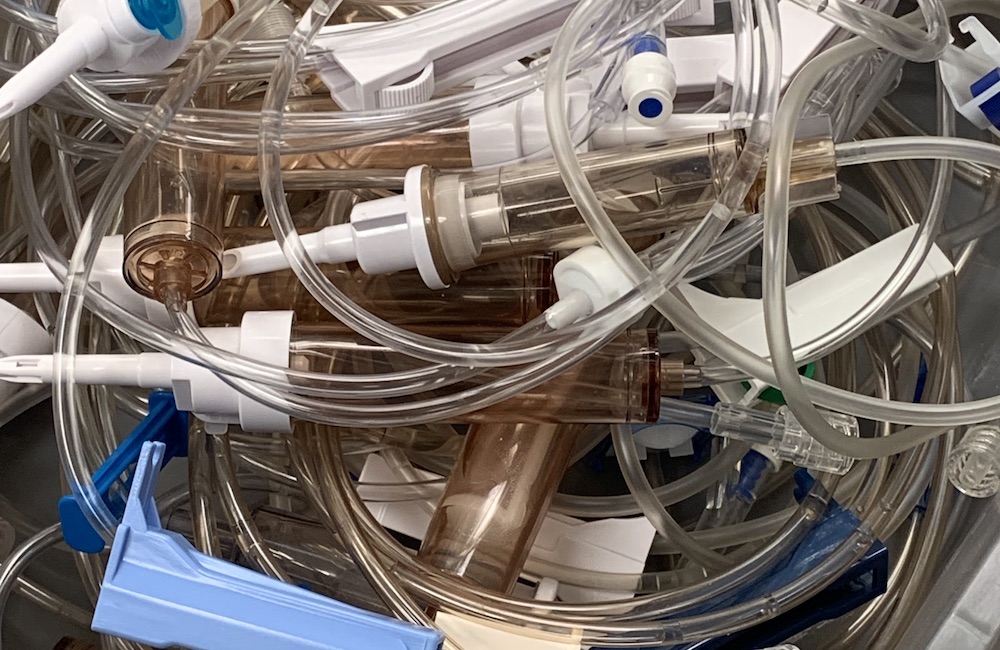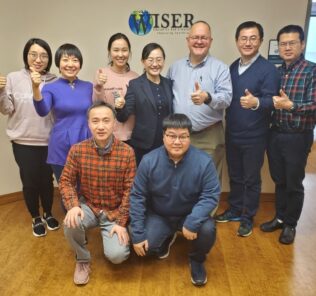Healthcare Simulation Sustainability: Reuse, Refill, Recycle, Request
Clinical simulation sustainability is an important topic that should be discussed across healthcare simulation programs and medical simulation centers. Healthcare simulation centers looking to adopt practices that lead to successful medical simulation training outcomes must be able to aquire the resources necessary to educate learners. However, while acquiring these resources is essential, ensuring that there is not an abundance of waste is equally as important. There must be a balance between suppy, demand, and resuse to maintain sustainability. This HealthySimulation.com article shares how simulationists can adopt more sustainable practices in their clinical simulation space through the “4Rs” – reuse, refill, recycle, and request.
Waste: Hospital waste recycling practices are deficient, with less than 15% of total waste being recycled (Bathish et al., 2022). Hospital simulation centers may be settings with impact reducing waste, but the current infrastructure makes recycling difficult or impossible. (Bathish et al., 2022). The approach of most healthcare simulation centers is that reusing supplies may be enough to curtail the amount of waste produced. However, reusing is not enough when clinical simulation tries to achieve a balance between product usage to learn tasks and skills and wastefulness.
The approach of most healthcare simulation centers is that reusing supplies may be enough to curtail the amount of waste produced. Clinical simulation centers are learning to reuse supplies such as intravenous (IV) tubing, IV solution bags, medication bags, and syringes. Some medical simulation centers are repurposing supplies and even recycling some supplies. Even though supplies can be recycled, there has been a difficulty due to the non-existent or limited infrastructure available to recycle products when they are used for healthcare simulation purposes.
Sponsored Content:
While adopting sustainable practices is good for the environment, these practices can also help with the financial burden of sustaining healtgcare simulation centers. Identifying supplies and equipment that are either made with sustainable materials or allow for repeated use with the same functionality can help to curtail costs and allow for money to be reallocated (Kleber & Cohen, 2020 as cited in Bathish et al., 2022). Future work with identifying suppliers with sustainable materials and practices will help to identify where this work is being done.
There needs to be more research on sustainability practices in nursing simulation. The amount of waste in nursing simulation is astronomical. While sustainability efforts exist outside of the healthcare simulation world, nursing simulation has unique challenges that require examination of sustainability practices. Small and large programs can improve their practices.
Specifically, with large programs that use healthcare simulation for all courses, the amount of waste can be challenging to calculate. For example, the University of Michigan’s School of Nursing (UMSN) assembled a task force (faculty, staff, students) to engage in supply chain activities and find sustainable practices (Bathish et al., 2022). The task force noted that approximately 300 pounds of IV tubing was wasted per semester.
This number does not account for the other plastic waste that is a result of various kits and supplies used for training (Bathish et al., 2022). While the goal is to recycle, recycling companies have not found a way to address all of the unique needs of simulation waste. While educators strive to provide learners with realistic experiences, this produces more waste. There are practices, within clinical simulation, that help with recycling or reusing equipment and supplies, but there is no standardized way to share this information.
Sponsored Content:
This conversation is front and center within the International Nursing Association for Clinical Simulation and Learning (INACSL) Sustainability Special Interest Group. Practices that can assist with adopting sustainable practices in the clinical simulation space, are discussed and shared. Reuse, refill, recycle, and request known as the 4Rs, are noted in the literature for sustainability. Below are helpful reuse, refill, recycle, and request tips.
Reuse: Reusing nursing simulation supplies can be challenging. Educators strive to provide learners with realistic experiences that mirror the clinical setting. This includes the utilization of new supplies every time a task is performed. There is a balance between continued use of new supplies for the first real experience and what can be reused for repeated practice. One school of nursing utilizes a bin to promote individual items that should be reused along with additional supplies for first-time use.
For example, learners practicing intravenous medication administration with new primary and secondary tubing, new intravenous fluids, flushes, alcohol wipes, etc., were asked to put reusable supplies in a large bin. The goal was to have the new supplies utilized at the beginning and again at the end of the clinical simulation. In between experiences, learners would repeatedly practice with the first item, reusing as needed for practice and then reserving the second set of new supplies for the final experience. This allowed learners to take ownership of their supplies and provide them the opportunity for authentic experiences and repeated exposure to an important skill.
Refill: Many plastic supplies that encountered in practice and in the simulation labs can be refilled. This includes saline bags, medication vials, syringes, etc. Refilling these items can provide repeated exposure while minimizing waste. One helpful tip to extend the life of these refillable items is to add a small amount of alcohol to preserve the various plastic supplies for reuse (Hockenberry & Clark, 2019).
Additionally, items like vial re-cappers can be purchased to help with the promotion of realism when reusing vials. Having a dedicated place with signage, to collect these items is suggested. After collection, refilling is promoted and educators avoid unnecessary disposal of supplies in good condition that are reusable. Granted these practices do take time and effort to continue…
Recycle: Often, some supplies, such as IV tubing, saline syringes, and plastic caps, etc. are not thought of as recyclable. Schools of nursing have found success recycling by conveniently placing receptacles within their lab and healthcare simulation spaces. Recycling bins in the lab, with signage that indicates by pictures what is acceptable recycling, can help to promote the recycling of appropriate waste. (Hockenberry & Clark, 2019). The signage and practice also helps with professional development as many facilities have their own waste disposal practices that specifies what supplies and equipment can be disposed of or recycled.
Request: Many challenges occur in faculty, staff, and students knowing how or what to recycle. Questions such as what gets placed in the trash, what gets recycled, or what ultimately ends up in the sharps container and confuse those participating in nursing simulation. By requesting signage, dedicated containers, clearly labeled receptacles, and crimping and de-crimping tools, faculty, staff, and students are now demystified about what gets recycled and the correct location for the recycling item (Hockenberry & Clark, 2019).
Requesting to collaborate with sustainability groups on campus can invite new ideas and perspectives for reutilizing and repurposing supplies and equipment. Many schools utilize sustainability practices around campus but often do not extend these practices into the healthcare simulation space. Requesting that learners donate unused and gently used supplies at the end of their program can increase supplies in the lab while reducing the need to purchase additional supplies (Hockenberry & Clark, 2019).
INACSL’s goal is to share this topic to get the conversation going, see what others are doing, and positively impact the environment. This special interest group continues this conversation within INACSL and welcomes new members and ideas. The organization is focused on broadening sustainability efforts in healthcare simulation.
Learn more about Healthcare Simulation Sustainability
References:
Bathish, M.A., Lee, D.R., Czerwinski, M.A., Marsack, J.E. (2022) A survey of sustainability efforts in healthcare simulation and clinical learning. Clinical Simulation in Nursing, 69, 1-6.
Hockenberry, K.L. & Clark, D. (2019). Supporting sustainability in a nursing clinical simulation lab. Pennsylvania Nurse, (74)3, 14-18.
Today’s article was guest authored by Linda Macera-DiClemente, DNP, BA, RN & Laura Van Horn, MSN, RN, Clinical Assistant Professor & Director of Nursing Simulation at the University of Michigan-Ann Arbor & Madonna University.
Have a story to share with the global healthcare simulation community? Submit your simulation news and resources here!
Sponsored Content:





















